Jesus Christ Superstar
A Rock Opera
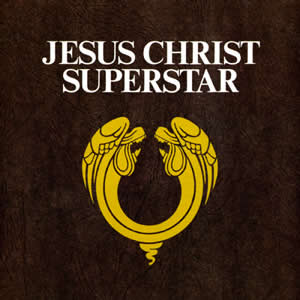 Before it was a theatre act, Broadway play, or motion picture, Jesus Christ Superstar was simply a 1970 rock album produced by composer Andrew Lloyd Webber and lyricist by Tim Rice. The work is loosely based on the four Gospels’ accounts of the last weeks of the life of Jesus Christ, but takes much liberty in interpretting the philosophical and interpersonal dynamics between Jesus and his apostles, especially Judas Iscariot, the man who would ultimately betray him. The work largely follows the form of a traditional passion play but with a twentieth century interpretation with a focus on the psychology of Jesus and the other characters.
Before it was a theatre act, Broadway play, or motion picture, Jesus Christ Superstar was simply a 1970 rock album produced by composer Andrew Lloyd Webber and lyricist by Tim Rice. The work is loosely based on the four Gospels’ accounts of the last weeks of the life of Jesus Christ, but takes much liberty in interpretting the philosophical and interpersonal dynamics between Jesus and his apostles, especially Judas Iscariot, the man who would ultimately betray him. The work largely follows the form of a traditional passion play but with a twentieth century interpretation with a focus on the psychology of Jesus and the other characters.
Webber and Rice had collaborated on several previous projects, starting with the 1965 musical The Likes of Us, which was actually shelved for four solid decades and not publicly performed until 2005. In 1968, the duo was commissioned to write a piece which became Joseph and the Amazing Technicolor Dreamcoat, a retelling of story of the biblical figure Joseph, set to several musical styles. In 1969 Rice and Webber wrote a song for the Eurovision Song Contest called “Try It and See”, which was later rewritten as “King Herod’s Song” for Jesus Christ Superstar. Webber says has said the piece was written as a rock album from the outset and set out from the start to tell the story through the music itself. Musically, Webber took delight in exploring different keys and time signatures, while Rice came up with some clever wordplay which fused modern phrases with traditional terms.
On this original album, the part of Jesus was sung by Ian Gillan, lead vocalist of Deep Purple, while Judas Iscariot is performed by Murray Head. Both Englishmen were in their mid-twenties and had several years in the music business with limited success. After declining an invitation to join the band upon their formation, Gillan joined Deep Purple in mid 1969. A performance of the song “Child in Time” caught the ear of Rice, who contacted Gillan and offered him the role of Jesus. After just a few rehearsals with Rice and Webber, Gillan recorded his entire vocal contributions in one three hour session. Beyond his singing and songwriting skills, Murray Head was also a seasoned actor who won a leading role in the Oscar-nominated film Sunday Bloody Sunday in 1971. For the role of Mary Magdalene, a then relative unknown Yvonne Elliman was chosen. Elliman had just begun performing in clubs the previous year and would be one of the few players and singers to join the cast of the Broadway production in subsequent years.
 Jesus Christ Superstar, Original Rock Opera |
|
|---|---|
| Released: September, 1970 (Decca) Produced by: Tim Rice & Andrew Lloyd Webber Recorded: Olympic Studios, London, May 1972-August 1973 |
|
| Side One | Side Two |
| Overture Heaven On Their Minds What’s the Buzz / Strange Thing Mystifying Everything’s Alright This Jesus Must Die |
Hosana Simon Zealotes / Poor Jerusalem Pilate’s Dream The Temple Everything’s Alright (Reprise) I Don’t Know How to Love Him Damned for All Time / Blood Money |
| Side Three | Side Four |
| The Last Supper Gethsemane The Arrest Peter’s Denial Pilate and Christ King Herod’s Song |
Could We Start Again Please? Judas’s Death Trial Before Pilate Superstar The Crucifixion John Nineteen: Forty-One |
| Vocal Cast & Roles | |
| Ian Gillan – Jesus | Murray Head – Judas | Yvonne Elliman – Mary Magdalene Paul Davis – Peter | Victor Brox – Caiaphas | Brian Keith – Annas Barry Dennen – Pontius Pilate | Mike D’Abo – King Herod |
|
| Primary Musicians | |
| Neil Hubbard – Guitars | Henry McCulloch – Guitars | Allan Spenner – Bass Peter Robinson – Piano, Organ | Bruce Rowland – Drums, Percussion |
|
The album starts with a heavily distorted guitar, setting the pace for the “rock” part of the rock opera before the actual overture kicks in with a musical sequence later repeated in the climatic “Trial Before Pilate”. “Heaven on Their Minds” a total funk/rock masterpiece sung solo by Murray Head as Judas with some great piano and organ by Peter Robinson and just a touch of strings for color. The story starts with Judas expressing concern over Jesus’ rising popularity and the inherent danger that brings in a land occupied by the Romans. “What’s the Buzz” introduces Jesus and the Apostles in a hippy-dippy kind of pop/hip song, absurdly
bringing the scene into the (then) modern age. Musically, the stratospheric bass by Alan Spenner brings the hyper jazz/funk to an extraordinary level.
Judas and Jesus have their first heated debate over the course of two tracks; “Strange Thing Mystifying” and “Everything’s Alright”. This debate concerns the appropriateness of Jesus consorting with Mary Magdeline, as Elliman offers a soft counter-balance to the argument with the verses of “Everything’s Alright”. The song is in a 5/4 time signature, offering the perfect rhythm to push it forward at a brisk pace for full effect and the vocal contrasts between Gillan, Head, and Elliman makes it a masterpiece. To close the original first side, the dark “This Jesus Must Die” is the most theatrical to this point as the conspirators are given dark and sinister vocals performed by Victor Brox as Caiaphas and Brian Keith as Annas and other performers as high priests. Halfway, the song picks up with a rock beat and the dialogue speaks of Jesus’ cousin John the Baptist who was put to death for his believes, a fate that the conspirators wish on Jesus.
The upbeat “Hosanna”, driven by strings, chorus, and a soaring melody begins Side 2 and symbolizes Jesus’ arrival in Jerusalem. “Simon Zealotes” and “Poor Jerusalem” reflect more of the competing philosophical vision. John Gustafson makes his only appearance on the album as Apostle Simon the Zealot, who suggests a revolution led by Jesus, offering power and glory to Jesus after a successful overthrow of the Roman occupation in an upbeat section backed by funk rhythms, led by piano and bass. Gillan’s reply as Jesus in “Poor Jerusalem” is more of a short piano ballad where Jesus rejects this suggestion, stating that none of his followers understands what true power is, nor do they understand his true message.
A bit of filler is thrown into the middle of the second side. “Pilate’s Dream” is a short, acoustic song that features Barry Dennen as Pontius Pilate, the Roman Governor of Judea, who foresees the trial and execution of Jesus along with the coming spread of Christianity. On “The Temple” the album gets a little lethargic and repetitive with the story of usary in the temple being a bit superfluous followed by Jesus being accosted by lepers, cripples, and beggars, all wanting to be healed.
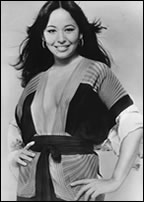 One of the highlights of the first act, and the peak of Elliman’s involvement on the album is the short reprise of “Everything’s Alright” which leads into the soulful folk song “I Don’t Know How to Love Him”. Led by the dual acoustic guitars of future Roxy Music member Neil Hubbard and future member of Paul McCartney’s Wings Henry McCulloch, the song contains a laid back arrange which provides the perfect canvas to compliment Elliman’s fantastic vocals. The song itself became a Top 20 pop hit. “Damned for All Time” / “Blood Money” begins with a free form, distorted solo electric guitar followed in sequence by a chorus of flutes before a riff-driven rock section with Head on lead vocals. Accented by great horn sections, this production masterpiece aptly closes the first Act, even with some abrupt changes between the two parts of the medley. Thematically, the song deals with Judas’ betrayal of Jesus to the high priest conspirators along with his internal conflict over the situation and hauntingly ends with an-almost Greek chorus speaking to Judas’ conscience.
One of the highlights of the first act, and the peak of Elliman’s involvement on the album is the short reprise of “Everything’s Alright” which leads into the soulful folk song “I Don’t Know How to Love Him”. Led by the dual acoustic guitars of future Roxy Music member Neil Hubbard and future member of Paul McCartney’s Wings Henry McCulloch, the song contains a laid back arrange which provides the perfect canvas to compliment Elliman’s fantastic vocals. The song itself became a Top 20 pop hit. “Damned for All Time” / “Blood Money” begins with a free form, distorted solo electric guitar followed in sequence by a chorus of flutes before a riff-driven rock section with Head on lead vocals. Accented by great horn sections, this production masterpiece aptly closes the first Act, even with some abrupt changes between the two parts of the medley. Thematically, the song deals with Judas’ betrayal of Jesus to the high priest conspirators along with his internal conflict over the situation and hauntingly ends with an-almost Greek chorus speaking to Judas’ conscience.
Act II begins with “The Last Supper”, a self-contained, multi-part suite which masterfully blends the rock and theatrical elements. Alternating between the folk chorus of the Apostles and several other parts consistng of another spirited dialogue between Jesus and Judas, with Gillan and Head at top vocal form, accompanied by a great electric piano and more exquisite bass by Spenner. While dealing with Gospel text, Rice also uses drug references “What’s that in the bread, it’s gone to my head” and slows the Apostles chorus as they fade from drunkenness, unaware of the profound proclamation made by Jesus. “Gethsemane” is the real showcase for Gillan and the most like “Child In Time”, the Deep Purple song which got Gillan the gig in the first place. Starting with great acoustic guitar and bouncy bass, the song soon builds with much orchestral accompaniment and is, perhaps, the most dramatic part of the entire album dealing with Jesus’ own crisis of faith as he faces his immanent demise.
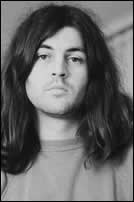 “The Arrest” starts a long sequence in the second act where Jesus faces an all night ordeal leading to his crucifixion. The apostles slowly wake to find Jesus under arrest to the tune of “What’s the Buzz” followed by various vocal members playing almost like reporters and nice rock passages travels along with the movement of the arresting party as they go before the high priests. A slight deviation is taken in “Peter’s Denial” featuring Paul Davis as Jesus’ closest apostle confidant but distancing himself when confronted on three separate occasions. The end of the Side 3 is the most sticky sweet, show-tune-ish section of the album, as well as least rock oriented. Dennen returns as Pilate in an exaggerated, jazzy version of “Hosanna” named “Pilate and Christ”. Pilate “washes his hands” of the situation and sends Jesus to the Jewish King Herod, leading to the rendition of Webber and Rice’s ragtime “Try it and See”, performed by Mike D’Abo as Herod.
“The Arrest” starts a long sequence in the second act where Jesus faces an all night ordeal leading to his crucifixion. The apostles slowly wake to find Jesus under arrest to the tune of “What’s the Buzz” followed by various vocal members playing almost like reporters and nice rock passages travels along with the movement of the arresting party as they go before the high priests. A slight deviation is taken in “Peter’s Denial” featuring Paul Davis as Jesus’ closest apostle confidant but distancing himself when confronted on three separate occasions. The end of the Side 3 is the most sticky sweet, show-tune-ish section of the album, as well as least rock oriented. Dennen returns as Pilate in an exaggerated, jazzy version of “Hosanna” named “Pilate and Christ”. Pilate “washes his hands” of the situation and sends Jesus to the Jewish King Herod, leading to the rendition of Webber and Rice’s ragtime “Try it and See”, performed by Mike D’Abo as Herod.
The final original side started “Could We Start Again Please?”, the only showcase for Elliman during the second act which doesn’t quite measure up to those in the first act and is almost set up like a pop song off the beaten path. “Judas’ Death” is a reprise of “Damned for All Time” and “Blood Money” with the same vocalists and Head’s vocals at top form as Judas’s guilt becomes overwhelming;
I have been splattered with innocent blood, I should be dragged through the slime and the mud…”
Head then does his own version as “I Don’t Know How to Love Him” before committing suicide to0 the sounds of the haunting Greek chorus.
The climax of the story is “Trial Before Pilate” which returns to the “Overture” a great sequence with wild, off key jazzy strings, synths, and horns and an intense dialogue between Gillan and Dennen with the crowd joining in as Pilate’s various thoughts on whether to release or crucify Jesus. A short rock break is taken with “The Thirty-Nine Lashes”, ending with a nice drum fill by Bruce Rowland. A final dialogue between Jesus and Pilate ensues with the crowd convincing Pilate to ultimately crucify Jesus; “I wash my hands of your demolition, die if you want to, you innocent puppet…” Although “Superstar” is supposed to be the focal point of the opera, it really pales in comparison to some of the other finer tracks. It does some nice chorus-driven hooks cut by one last funky track musically and a posthumous reappearance of Head’s Judas, now a ghost and some soulful female backup singers. The song, which is almost mocking in tone, did peak at number 14 on the Billboard pop charts in 1971. The album then kind of whimpers out in an anti-climatic fashion with the nearly psychedelic synth-experimentation of “The Crucifixion” followed by the calm, orchestral reprise of “Gethsemane” in “John Nineteen: Forty-One”.
 Andrew Lloyd Webber originally thought the production would be limited to a niche audience, blocked out on either side by young people thinking it was uncool subject matter and religious people who would think it was too controversial. Then unexpectedly it rose to the top of the album charts, sparking a short arena tour and what Webber called “one of the worst productions he had ever seen on Broadway”. In fact, the only reason it was put on Broadway was to head off the various small theatre and school productions which had begun to sprout up in 1971.
Andrew Lloyd Webber originally thought the production would be limited to a niche audience, blocked out on either side by young people thinking it was uncool subject matter and religious people who would think it was too controversial. Then unexpectedly it rose to the top of the album charts, sparking a short arena tour and what Webber called “one of the worst productions he had ever seen on Broadway”. In fact, the only reason it was put on Broadway was to head off the various small theatre and school productions which had begun to sprout up in 1971.
Webber and Tim Rice collaborated once again with Evita in the late 1970s and Webber would go on to produce two of the most successful Broadway productions ever with Cats and The Phantom of the Opera, both debuting in the 1980s. Ian Gillan went on to meteoric success as frontman of Deep Purple, climaxing with the 1972 album Machine Head (our 1972 Album of the Year) before abruptly leaving the group in 1973, although he would reunite with Deep Purple several times in the future. Murray Head continued to act and record songs, with his biggest charting success being “One Night in Bangkok” in the mid 1980s. After her Broadway performances and role as Mary Magdelene in the 1974 Hollywood film of Jesus Christ Superstar, Yvonne Elliman sang on several Eric Clapton albums, most poingnently Slowhand in 1977, before a brief but successful disco/pop career, which included several Top 20 hits. She decided to dedicate herself to her two children in 1979 and has pretty much stayed out of the public spotlight since.
Over the past four decades, several different versions of Jesus Christ Superstar were produced spanning the entire spectrum of media, on every corner of the globe, making it one of the most popular universal productions ever. In May 2012, Webber launched a reality television show called Superstar where the UK public decided who would play the role of Jesus in an upcoming arena tour. Ben Forster was chosen and the arena tour, which began September 2012 and continues to this day (March 2013). Webber claims this tour most closely represents the original vision for the rock opera.
~

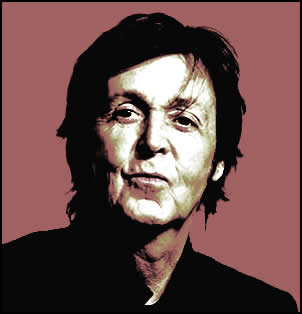
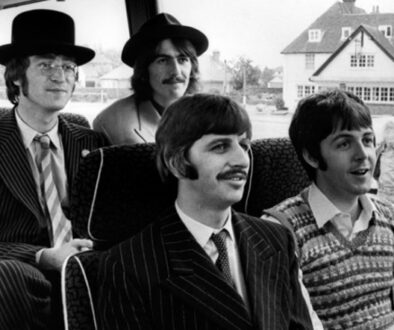
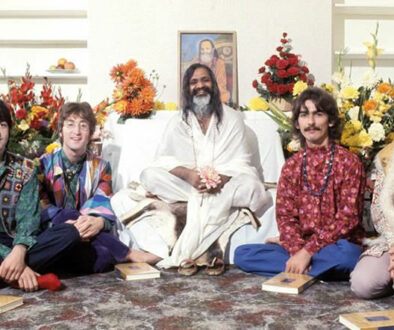
Theatre Chat - Carlisle Theatre Co's "Jesus Christ Superstar" | Kids Theatre News, Central PA
October 16, 2014 @ 7:00 am
[…] and Tony Award-winning rock opera by Andrew Lloyd Webber and Tim Rice. Originally produced in 1970 as an album, with Ian Gillian of Deep Purple as Jesus, the show has received many awards. Throughout the […]
November 20, 2015 @ 1:07 pm
I have Jesus Christ superstar 33 album with the menu inside. I know it’s the rock opera. It’s in good condition leave me an email I would be happy to send a picture.
November 20, 2015 @ 1:19 pm
Thanks Cathy. We actually do have an original LP.
July 16, 2017 @ 2:25 pm
The song, “Could We Start Again Please?”, which you have as the first cut on side four, was not a part of the recording, “Jesus Christ Superstar – A Rock Opera.” That song was added to the score of the motion picture “Jesus Christ Superstar”, released in 1973, and the song was included on the soundtrack recording.
April 6, 2021 @ 1:04 am
Great detailed review! I have the original 1970 Decca [best], and the [inferior] 1973 MCA reel to reels, and at 45 min per side, join Side A (parts 1,2) Side B (parts 3,4) . .. my question is about your “yellow box” info… says ‘released Sep 1970- recorded May 1972 -Aug 1973’.. wasn’t that May 1969 – Aug 1970?
Anyway great review!
Holy Week | Ric Albano
March 24, 2024 @ 4:34 pm
[…] always enjoyed Easter in spring and would make it an annual tradition to enjoy the music of Jesus Christ Superstar during holy week. This outstanding 1970 rock opera record by Tim Rice and Andrew Lloyd Webber […]